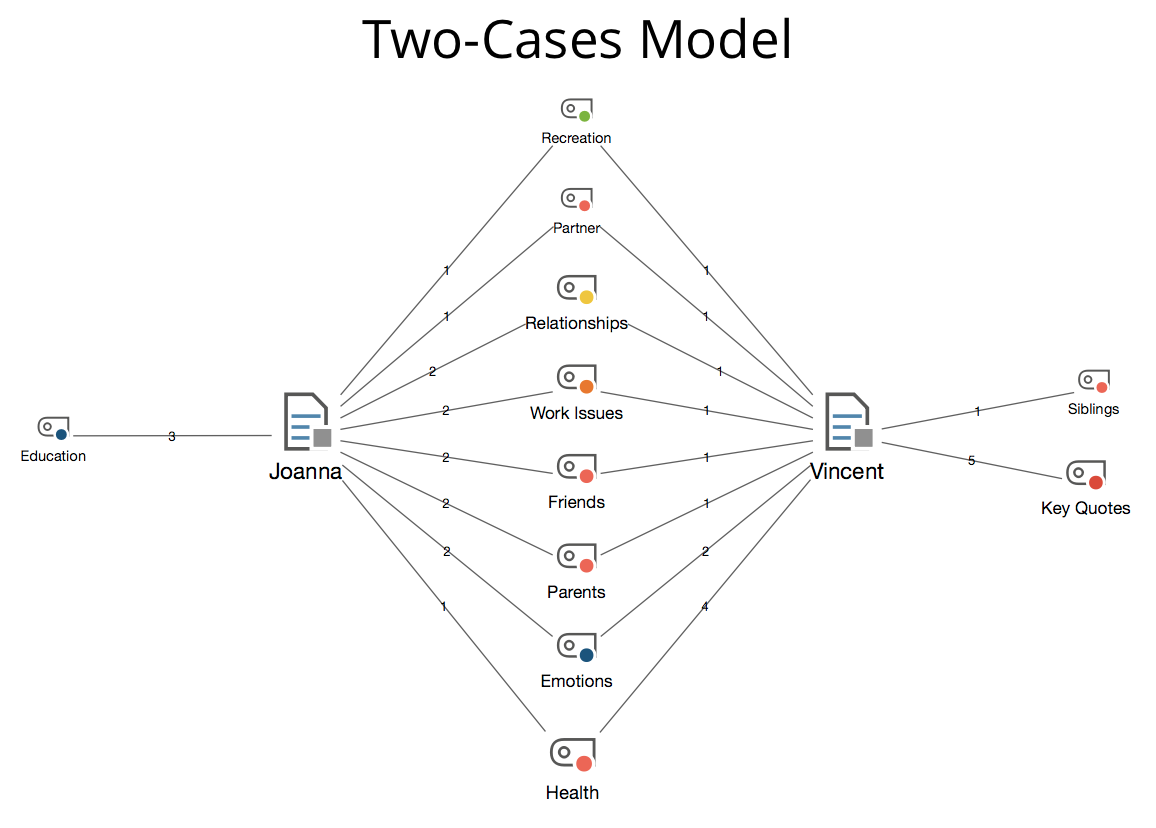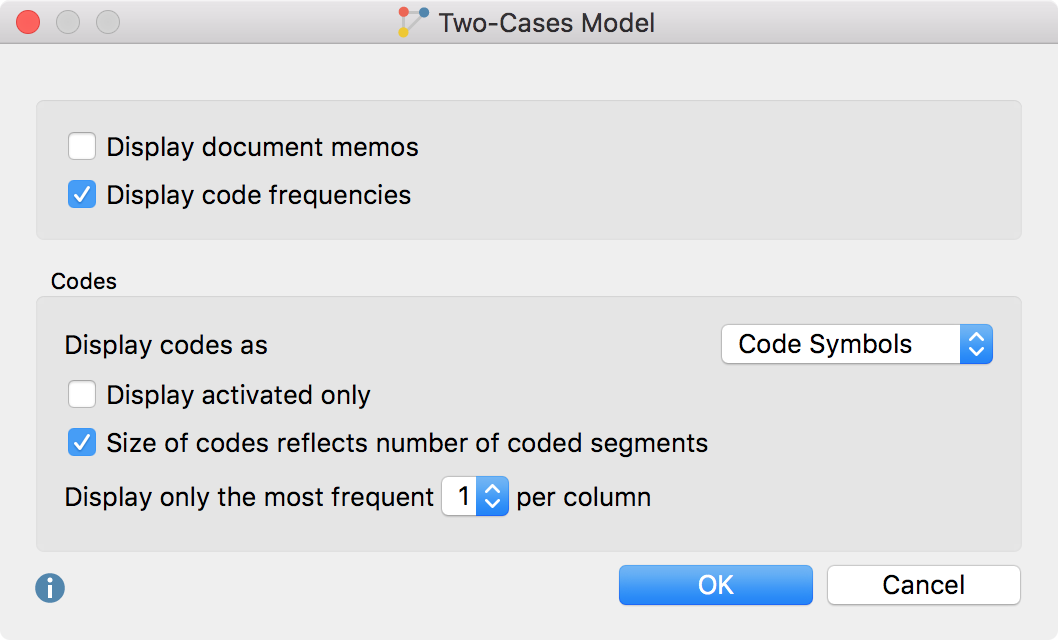Function of this model
Using the two-cases model, you can visualize the extent to which codes, e.g. Relevant topics, occur in two cases or only in one case. The frequencies of the codes can be produced per case and their memos can also be integrated.
With the two-cases model, you can contrast two documents, document groups, document sets or a mixture of these levels.
Model display in the map
The following figure shows an example of this model:
- The two selected cases (documents in this example) are compared at a fixed distance.
- At the middle between the two cases you will see the the codes that appear in both documents.
- The pages contain the codes that were used in only one case at a time.
- The connection lines indicate the frequency of code usage.

Creating a new model and model options
Select the two-cases model via the New Model menu in the Start tab, and drag two documents, document groups or document sets from the "Document System" onto the map. The following options dialog window will appear:

Display document memos – If this option is activated, the two memos belonging to the document or document group from your "Document System" are integrated into the map.
Display code frequencies – This option displays the number of times a code is used in each case on the lines.
Display codes as – The symbols can be displayed as circles or as code symbols in the map. The display of the codes can be subsequently changed via the “Properties” window.
Display activated only – Only the codes from the code system that are currently activated are considered.
Size … number of coded segments – Select this option to make codes with many coded segments larger than codes with few segments. MAXMap uses three different sizes for this style of code representation: codes whose frequencies are in the range of one standard deviation around the mean are displayed in a medium size. Codes with more or less coded segments receive a larger or smaller symbol. If the code frequencies are close together, MAXMaps uses only the smallest or smallest together with the average symbol size.
Display only the most frequent (5-15) per column – The middle and sides of you map will display at maximum the number of codes you select here. If the frequencies are the same, the code higher up the code system is given preference.
